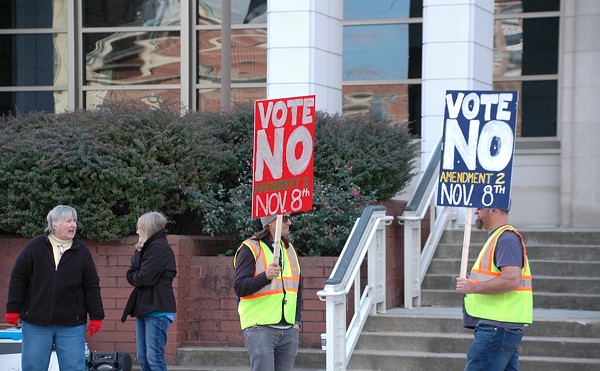|
Replacing parking lots with flowers, trees and animals isn't a hard sell, and at $9.44 a year for a $100,000 house it's what most voters would call a no-brainer. That's what the Cincinnati Zoo and Botanical Gardens hopes will be the reaction to its .46-mill levy, also known as Issue 17 on the March 4 Hamilton County ballot.
It's a 32-cent increase for the first year and will generate approximately $36.3 million over five years. That's about $7.2 million annually (www.friendsofthecincinnatizoo.org).
"Ever since 1982, our biggest supporters and biggest partners have been this public-private partnership with the voters and taxpayers in Hamilton County," says Thane Maynard, executive director of the zoo. "Since that time we've received modest operating support through Hamilton County property taxes that go specifically for operating. Funds from the levy go to support what we call basic zoo operations, meaning the core of why the zoo is here — the care and feeding of animals, care of our botanical gardens and maintenance of our buildings."
The animals' food bill alone makes any shopping trip to feed a hoard of teenagers seem like pocket change.
"Just to feed the animals, we spend about a million and a half dollars buying food," Maynard says.
The levy funds, which cover about 23 percent of the zoo's annual budget, will pay for the "chefs" who prepare those gourmet meals, also known as the animal keepers.
These professionals also spend a lot of time with visitors helping them to learn about animals. At 10 a.m. at various locations throughout the grounds, the keepers are out with animals to answer questions; during the winter, a penguin is frequently a morning resident in the lobby of the bird house.
"Our purpose is to give people opportunities to get close to animals, to fall in love with wildlife," Maynard says. "Zoos are not, and never will be, a replacement for the wild. Wildlife needs wild places to survive. What zoos are is a great, big urban education center about wildlife."
Installed as executive director in July 2007, Maynard is passionate about plants, animals and their care. He's continuing the organization's strategic and master plans, and they're big.
"The long-term goal, if we were to blink our eyes 10 years from now — so it's not the '07 levy, but it's the '17 levy — we'd be saying what the Cincinnati Zoo did was double the amount of animal space at the zoo by moving all of the parking out," Maynard says. "We're trying to take the core of the zoo, the 67 acres, and make that all animals and plants. In order to do that, we're enlarging our exhibits. The only way we can is we're removing our parking off-grounds. The acre and a half where we have Jungle Trails used to be an acre and a half of gravel parking lot. Where we have our education center used to be about 100 parking spaces."
Quick to point out that the levy funds will not be used for construction projects — that money comes from private donors — Maynard says the zoo is merely asking taxpayers to help cover the cost of caring for the botanical gardens and animals.
"The increase we're getting is well under the level of inflation," he says. "We are receiving less dollars than we received in 1997, and not just less adjusted for inflation. Less dollars. We're the least subsidized zoo in the state of Ohio, and the average cost to a home owner is $9.44. ¸ That's the tax bill for the year. It's a very simple ¨yes.' "
Ohio Rep. Tom Brinkman, one of the leaders of Coalition Opposed to Additional Spending and Taxes (COAST), says that, while the group doesn't endorse tax levies, it doesn't oppose those that stay within the rate of inflation.
"The zoo levy has remained within the rate of inflation," Brinkman says, "and that's our standard."





